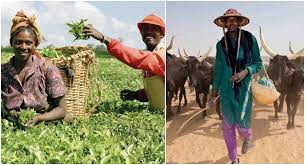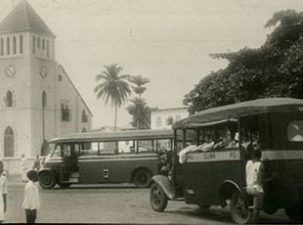The Federal Government has presented a plan to permanently solve the farmers-herders conflicts in the country, which have claimed the lives of thousands over the years.
Hundreds of people have been killed in 2018 alone in violence involving nomadic herdsmen in states like Benue, Plateau, and Kaduna.
The presentation of the plan was made by the technical adviser to National Economic Council, NEC, Andrew Kwasari, Tuesday, in Abuja.
The presentation event was attended by several public officials including the Minister of Agriculture, Audu Ogbeh and governor of Benue State, Samue Ortom.
Kwasari’s presentation showed that the plan stemmed from meetings and recommendations by the Federal Ministry of Agriculture and Rural Development, FMARD, and National Economic Council in 2017.
The economic council is headed by Vice President Yemi Osinbajo and includes all state governors as well as some ministers as members.
The presentation event was attended by several public officials including the Minister of Agriculture, Audu Ogbeh and governor of Benue State, Samue Ortom.
Six key pillars
The government’s new plan is tagged, ‘The National Livestock Transformation Plan.’ It is built on six key pillars: economic investment, conflict resolution, law and order, humanitarian relief, information education and strategic communication; and cross-cutting issues.
According to the plan, the economic investment pillar would support and strengthen the development of market-driven ranches in seven pilot states for improved livestock productivity through breed (genetic) improvement and pasture production, in addition to efficient land and water productivity.
The government also said it would rebuild social capital at the community level to promote mutual trust, confidence building and consolidate the peace process, with regards to the conflict resolution pillar.
The plan also showed that the law and order pillar would support the strengthening of legal frameworks for improving livestock production, peace and harmony.
The fourth pillar, humanitarian relief will focus on rebuilding and reconstructing of common facilities, worship places, markets and individual homes that have been destroyed.
The fifth pillar will aid information, education and strategic communication on the development of grazing reserves in the frontline states, and mitigate the consequences of these conflicts such as wanton loss of lives, destruction of properties, including schools and facilities.
The ‘cross-cutting’ issues pillar identifies various cross-cutting issues necessary to realise the objectives of the programme, which include monitoring and evaluation and research to contribute evidence base in programme implementation; as well as gender mainstreaming, the plan showed.
Frontline states
Ten key states were identified as the frontline states to receive pilot interventions in line with the recommendations of the FMARD and NEC livestock conference. The states include: Adamawa, Benue, Ebonyi, Edo, Kaduna, Nasarawa, Oyo, Plateau, Taraba and Zamfara. The plan includes creation of large ranches in each of these states.
“A Ranch Design Plan has also been proposed in models of various sizes clustered in 94 locations in the 10 pilot states. The government intends to transition pastoralism to ranching in order to reduce the struggle for common resources,” Mr Kwasari stated in his presentation of the plan.
In terms of size, the proposed ranch size models are: “Cluster 30, 60, 150 and 300 cows ranch models in a location within the donated gazetted grazing reserves; and “a minimum 1000 cows breeder ranch in 7 of the 10 pilot states.”




